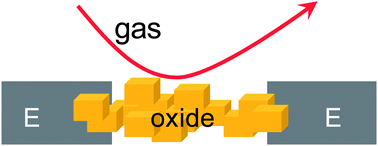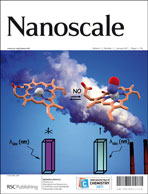Anisotropy is a basic property of single crystals. Dissimilar facets/surfaces have different geometric and electronic structure that results in dissimilar functional properties. Several case studies unambiguously demonstrated that the gas sensing activity of metal oxides is determined by the nature of surfaces exposed to ambient gas. Accordingly, a control over crystal morphology, i.e. over the angular relationships, size and shape of faces in a crystal, is required for the development of better sensors with increased selectivity and sensitivity in the chemical determination of gases. The first step toward this nanomorphological control of the gas sensing properties is the design and synthesis of well-defined nanocrystals which are uniform in size, shape and surface structure. These materials possess the planes of the symmetrical set {hkl} and must therefore behave identically in chemical reactions and adsorption processes. Because of these characteristics, the form-controlled nanocrystals are ideal candidates for fundamental studies of mechanisms of gas sensing which should involve (i) gas sensing measurements on specific surfaces, (ii) their atomistic/quantum chemical modelling and (ii) spectroscopic information obtained on same surfaces under operation conditions of sensors.

You have access to this article
 Please wait while we load your content...
Something went wrong. Try again?
Please wait while we load your content...
Something went wrong. Try again?


 Please wait while we load your content...
Please wait while we load your content...